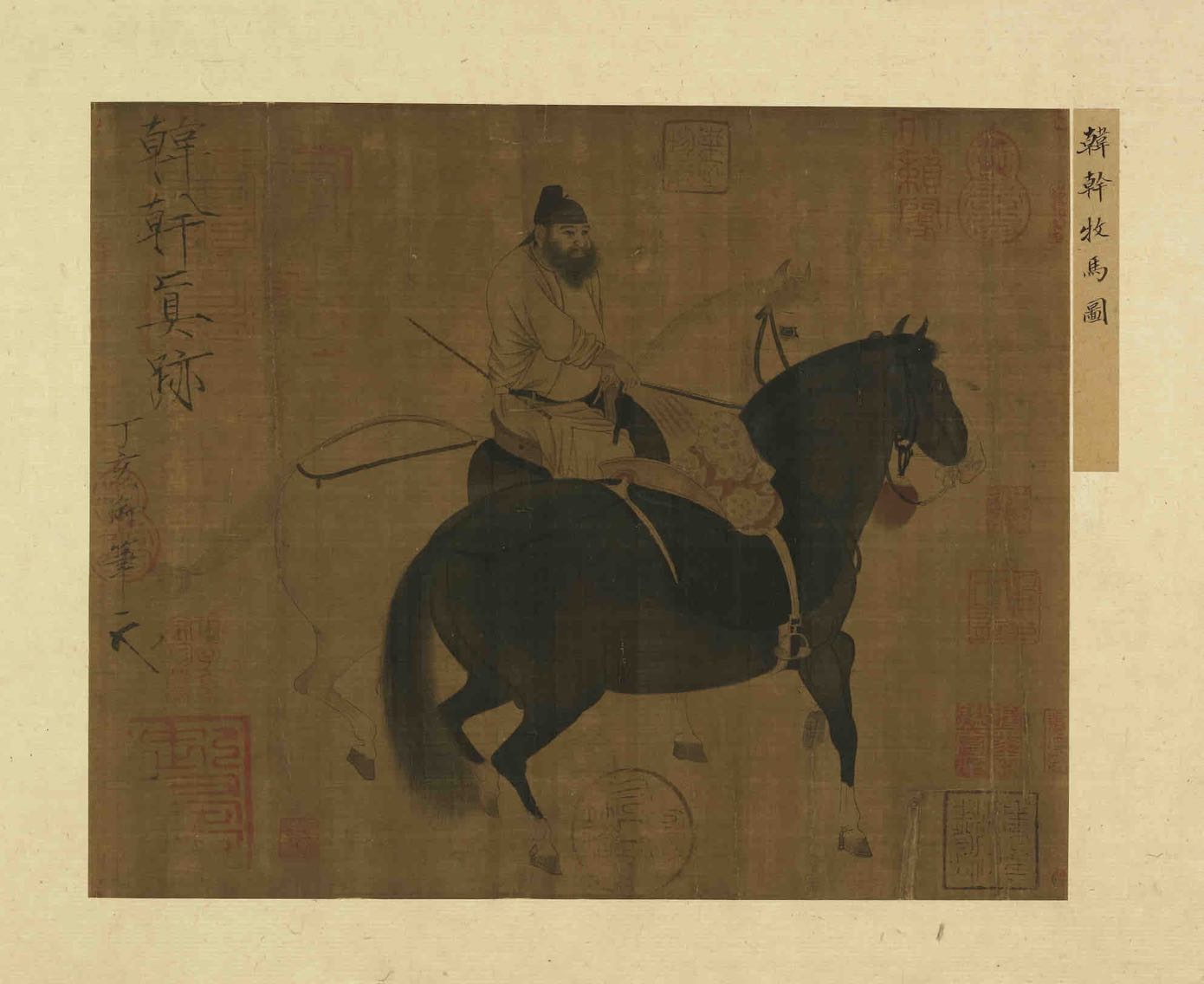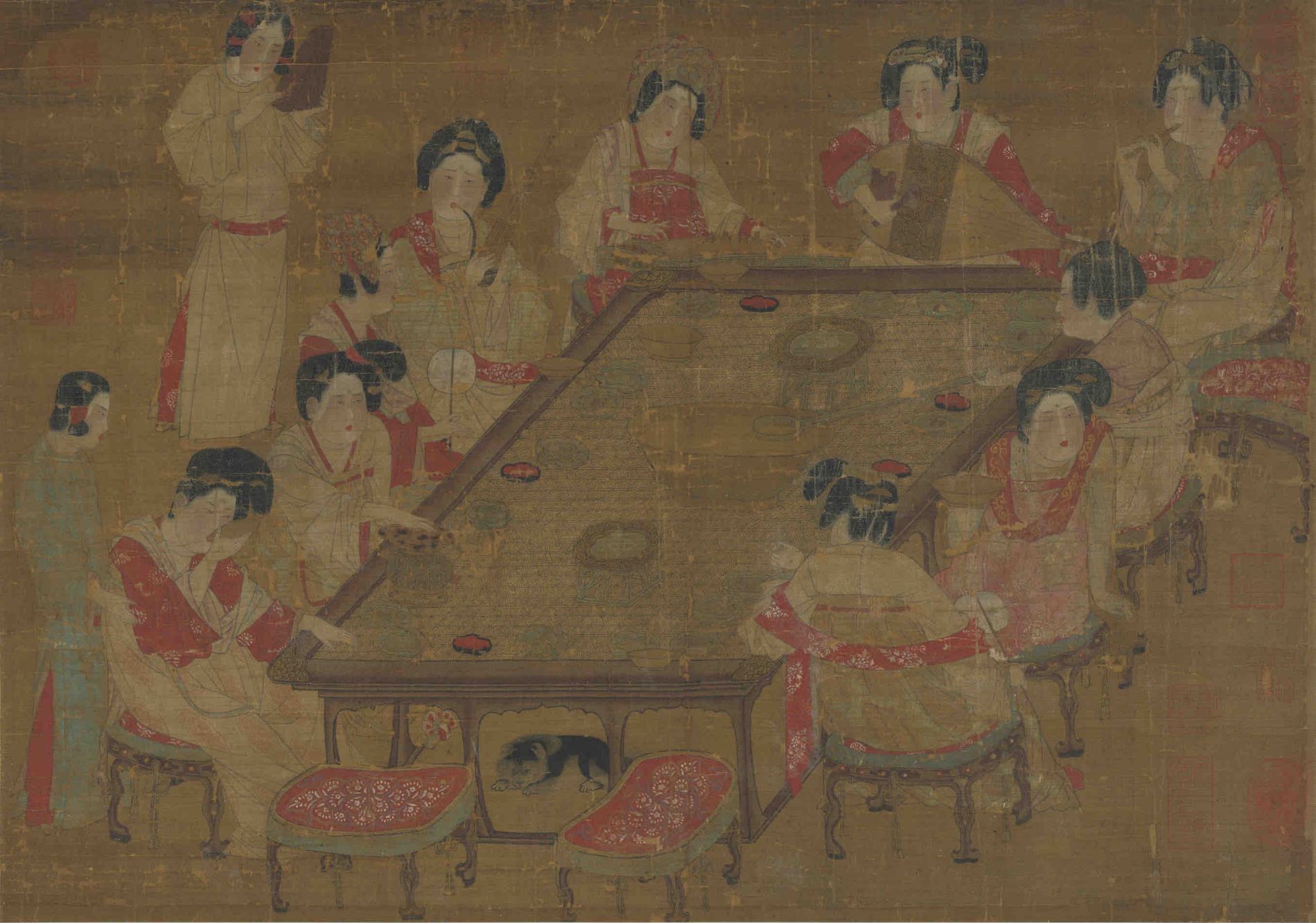National Palace Museum
The Collections in National Palace Museum (NPM) include, paintings, calligraphy, books, documents, ceramics, bronzes, jades, and curios. And most of the artifacts from the NPM's collection came from The Palace Museum, the preparatory department of the Nanjing, and the temporary palace museums in Jehol and Shenyang in 1948. The brief history and the organization of NPM are mentioned below.
A. History Of the National Palace Museum
1. The Birth of the National Palace Museum
Originally, the NPM's artifact collection was kept at the back of the Forbidden City and only available for the royal family. To satisfy the public's wish to witness the magnificence of the National Palace Museum, the government announced National Palace Museum to be opened to the public. The opening ceremony was held on Oct. 10, 1925.
2. Arrival of Artifacts in the National Palace Museum
In fall 1948, NPM's Executive Director advocated that artifact masterpieces be shipped to Taiwan, and there were altogether over one thousand containers being transported to Taiwan. In 1,573 artifacts including calligraphy, famous paintings bronzes, tapestries, porcelains, jades, curios, rare books, and historical documents were exhibited in six separate galleries and eight different art galleries.

|
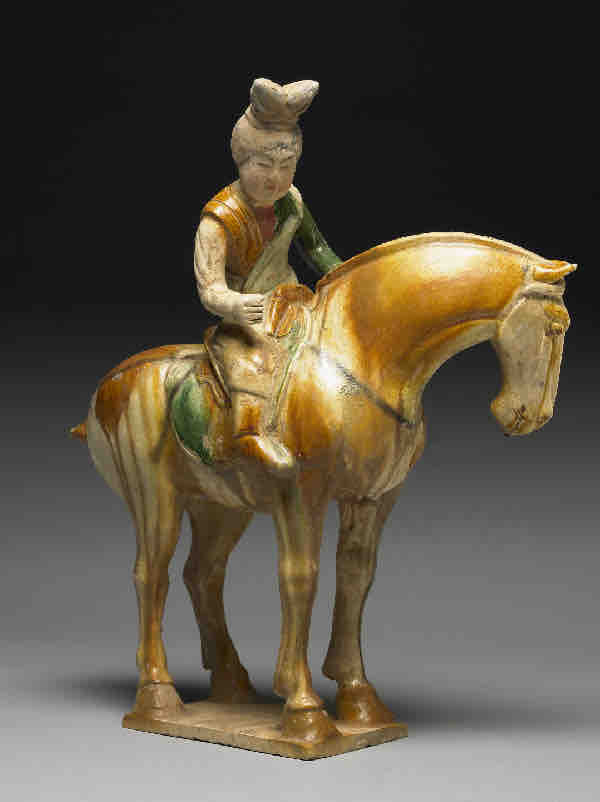
|
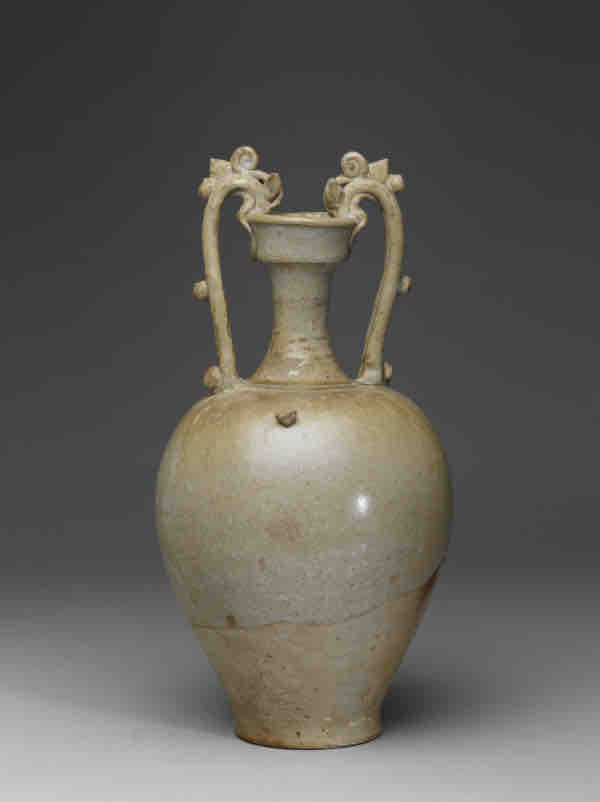
|
| Jadeite Cabbage | Pottery figure of ladies playing polo game in sancai tri-color glaze | White porcelain vase with double dragon-shaped handles |
Reference: National Palace Museum
https://www.npm.gov.tw/en/
3. Developments of the National Palace Museum
In addition to the collections from The Palace Museum, the NPM also accepted lent or donated artifacts from domestic and foreign collectors including antiquities, paintings and calligraphy, and rare books to make the NPM collection more complete and well developed.
4. From Local to International
The National Palace Museum houses a magnificent collection of precious Chinese artifacts and serves the role of protecting human and art histories. The NPM hopes to win the love and recognition of the Taiwanese public, enriches Taiwan's social and cultural foundations, and attracts more visitors locally and internationally.
B. Artifact Restoration Department in National Palace Museum
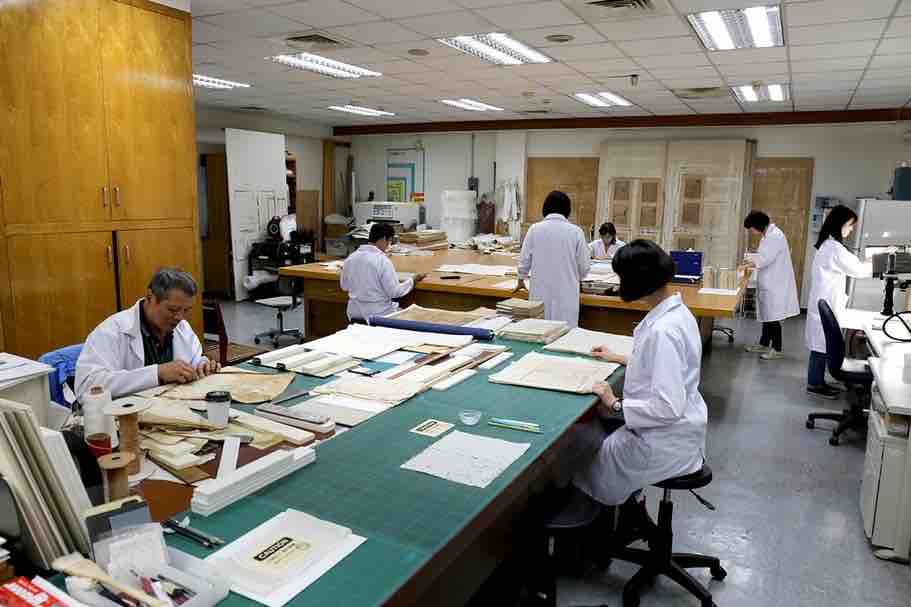 The Artifact Restoration Dept. is under the Department of Registration andConservation*. In the National
Palace Museum, there are many different staffmembers with specific duties. For example, at the
museum’s entrance, there areticket sales and security personnel. Then, upon entry to the
exhibition hall, there aremore assistants and docents. It may seem ordinary, but if an artifact can be
displayedin the exhibition hall, many people need to plan and work together. The key person inthis
process is the "curator." The curator is like a storyteller. He may create the themeand story he wants
to exhibit. After deciding on the theme, he has to select theartifacts. The process of selecting the
artifacts usually cannot be achieved in a shorttime. The layout of the exhibition is not simple, and it
requires much effort. We haveto decide what kind of environment will not destroy the artifacts, so the
lighting,temperature, and humidity of the exhibition hall all need to be taken intoconsideration. For
example, one may find that the lighting inside of exhibition halls isnot so bright, because this can
protect the artifacts. Under fortunate circumstances,the artifacts were kept in a good condition, but
sometimes they were damaged. In thiscase, the restorers have to check and restore them carefully and
display them afterthe reparation is complete. The process can be very complicated.
The Artifact Restoration Dept. is under the Department of Registration andConservation*. In the National
Palace Museum, there are many different staffmembers with specific duties. For example, at the
museum’s entrance, there areticket sales and security personnel. Then, upon entry to the
exhibition hall, there aremore assistants and docents. It may seem ordinary, but if an artifact can be
displayedin the exhibition hall, many people need to plan and work together. The key person inthis
process is the "curator." The curator is like a storyteller. He may create the themeand story he wants
to exhibit. After deciding on the theme, he has to select theartifacts. The process of selecting the
artifacts usually cannot be achieved in a shorttime. The layout of the exhibition is not simple, and it
requires much effort. We haveto decide what kind of environment will not destroy the artifacts, so the
lighting,temperature, and humidity of the exhibition hall all need to be taken intoconsideration. For
example, one may find that the lighting inside of exhibition halls isnot so bright, because this can
protect the artifacts. Under fortunate circumstances,the artifacts were kept in a good condition, but
sometimes they were damaged. In thiscase, the restorers have to check and restore them carefully and
display them afterthe reparation is complete. The process can be very complicated.
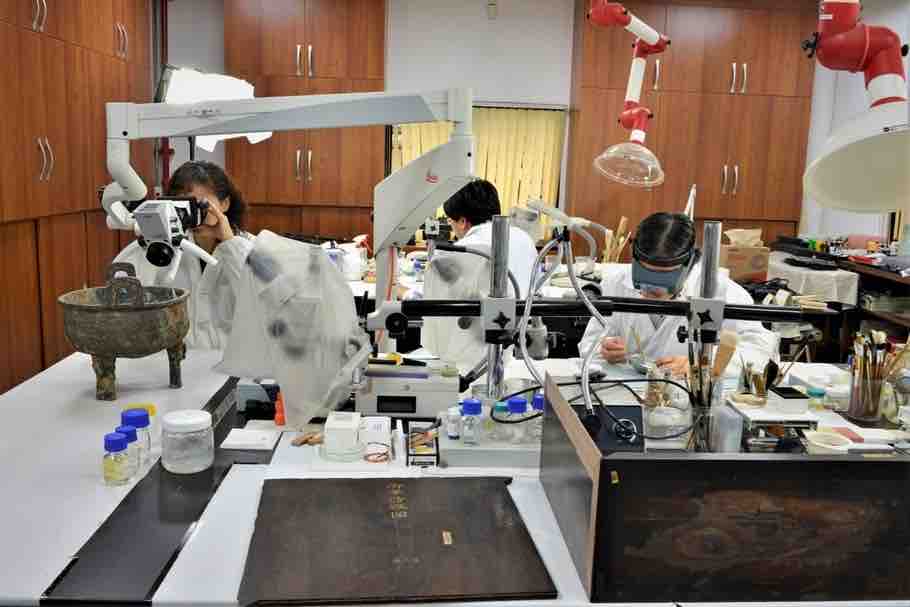 There are six restorers work under the Artifact Restoration Department who act like the doctors of the
artifacts. They
restore the damaged artifacts to extend their longevity. They work behind the scenes. Among the domestic
museums, the Nation Palace Museum currently has the most restorers. The most important mission of the
Artifact Restoration Department is to maintain the safety and preserve the longevity of the artifacts to
ensure that the exhibition can be held. There are four restoration rooms in the department, and they are
private and protected. Non-employees must go through an official application process and obtain approval
from the Superintendent of the National Palace Museum to enter the reparation sites.
There are six restorers work under the Artifact Restoration Department who act like the doctors of the
artifacts. They
restore the damaged artifacts to extend their longevity. They work behind the scenes. Among the domestic
museums, the Nation Palace Museum currently has the most restorers. The most important mission of the
Artifact Restoration Department is to maintain the safety and preserve the longevity of the artifacts to
ensure that the exhibition can be held. There are four restoration rooms in the department, and they are
private and protected. Non-employees must go through an official application process and obtain approval
from the Superintendent of the National Palace Museum to enter the reparation sites.
* Responsibilities of Department of Registration and Conservation include: Registration and acquisition of NPM collections.Preventive preservation and scientific study of NPM collections.Repair and maintenance of NPM collections.Other affairs concerning registration and preservation.(Source: National Palace Museum)
☞ See more at the Official National Palace Museum Website ☞
